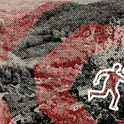Politicians of all parties like to invoke the memory of the suffragettes when they wish to offer support for peaceful protest. But their statements often show their ignorance of the history of the suffragette movement.
The Home Office has been heavily criticised for its ongoing attempt to push through the dangerously authoritarian Public Order Bill in reaction to the protests of environmental groups such as Just Stop Oil and Extinction Rebellion. Comparisons are often drawn between these protestors and the suffragettes: committed believers pursuing a righteous cause. A prominent critic of the bill, Peter Hain, former Northern Ireland secretary, has argued the government’s attempts to repress these protests through the bill “would have throttled the suffragettes and blocked their ability to rattle parliament’s cage” if enacted in the past. Meanwhile shadow home secretary Yvette Cooper has argued the government is attempting to extend the powers it reserves for “terrorism to peaceful protest”.
The problem is that the suffragettes were seen as terrorists by the government, and their protests not only rattled parliament’s cage, but also blew up several prominent MPs’ houses. Their campaign, which began peacefully enough, became increasingly disruptive and violent in retaliation to governmental suppression and state violence.
We are used to images of the suffragettes—the members of the Women’s Social and Political Union, founded in 1903 and run by Emmeline Pankhurst and her daughters—being chained to railings, destroying paintings and marching for a woman’s right to be heard. But this is a sanitised version of their history. The suffragettes were one of the most dangerous and successful domestic terror organisations to have operated across the United Kingdom and Ireland, reaching the height of their arson and bombing campaign in 1912 and 1913.
Orchestrated by Christabel Pankhurst, the suffragettes’ official ‘Reign of Terror’ began with a now legendary speech by her mother, Emmeline: “Be militant each in your own way... Those of you who can break windows—break them. Those of you who can still further attack the secret idol of property… do so… I incite this meeting to rebellion.”
The methods her members adopted ranged from “Votes for Women” graffiti in public parks, and elderly ladies applying for gun licenses, to the far more violent. Chemical attacks via letters addressed to “Mr George” and “Mr Asquith” exploded into flames as they were lifted out of postboxes in Coventry, London, Edinburgh, Northampton and York, signalling a new stage for the campaign in the months after Emmeline’s speech in 1912.
The first bomb attack struck right at the heart of government, when Emily Wilding Davison and her companions blew up Lloyd George’s new holiday cottage at Walton-on-the-Hill, near Epsom, on 19th February, 1913. The Pall Mall Gazette reported the attack under the headline “SUFFRAGETTE TERRORISM”, the first identifiable use of the term, while the Daily Mirror used its entire front page to reproduce a photograph of one of the bombs found inside. April saw a full-scale war on the railways, attacking the transport networks that kept the country moving: carriages at Davenport Junction in Stockport exploded after devices were placed underneath the seats. The railway station at Oxted was decimated by a bomb left in the men’s lavatory. Most horrifyingly, on 9th April, two bombs were left on the busy Waterloo to Kingston line, placed on trains going in opposite directions. At Battersea, the bomb was discovered in a crowded third-class carriage on the train from Kingston before it exploded, after the railway porter noticed smoke slowly creeping from under a seat. He discovered a white wooden box wired with a timed explosive and packed with lumps of jagged metal, bullets, and scraps of lead. Four hours later, as a train from Waterloo pulled into Kingston, its own third-class carriage exploded and was quickly consumed by fire. Bomb and arson attacks occurred in Abercorn, Portsmouth, Sheffield, Bath, Aberdeen, Tunbridge Wells, Plymouth Hoe, York, Thanet, Birmingham, Newcastle, Cardiff, Preston, London and Manchester, ended only by the outbreak of the First World War.
Today, much as in the time of the suffragettes, the government sees any form of protest that disrupts the working of the country as an attack on the state and can compare it to as terrorism, no matter the cause. Just as the protesters today are met with state violence, arrests and prison time, so too were the suffragettes, even before their bombs. Just as the suffragettes began with peaceful protests and then resorted to disruptive and dangerous tactics, so too have our current environmental protestors intensified their actions as a response to climate apathy.
But here’s the problem: as long as the protests cause significant disruption, the protestors will have a voice. They will be interviewed at length, and they will cling to this as evidence that their tactics get their message out there. This is exactly the same approach the suffragettes employed. They wanted to be arrested because they knew their words would be recorded, printed and spread by the media. But their violent approach did little to change the government’s position, leading only to further and harsher penalties. As their tactics caused problems for ordinary people, public support rapidly began to fade.
While protesters today maybe employing similar tactics to the suffragettes, they are also falling foul of the same reactions, far earlier and with less to show for it. And politicians who wish to invoke the memory of the fight for the vote should do so with the full knowledge of what they are calling on: a wild and dangerous politics that sought revolution, by any means. That spirit is irrepressible and necessary—but it is not peaceful.












